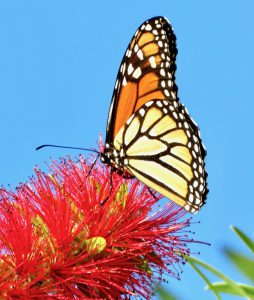
Monarch sampling the Bottlebrush
The Monarchs are getting ready to haul off to Mexico. It is that season. These creatures are worthy of our respect and admiration. This one fueling up on nectar from my Bottlebrush is the forth generation of this year. This Monarch is destined to fly from the Florida Panhandle to Mexico for the winter. I am not any authority on Butterflies but witnessing this spectacle when they cover my Bottlebrush trees has led me to Google a bit. If you would witness the “gathering” on my Bottlebrush trees and not be moved you are probably dead. I simple must share this with my friends.
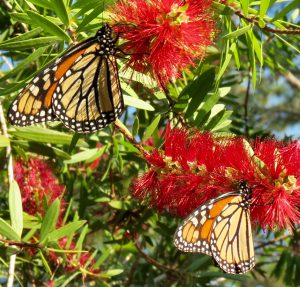
Monarch sampling the Bottlebrush
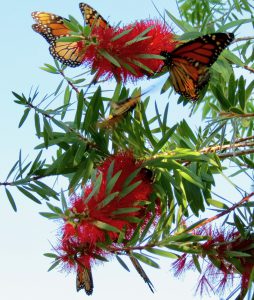
Monarch sampling the Bottlebrush
It is impossible for me to get a picture that conveys the sheer number on my trees. These two above is just to give an idea of the density of the Monarchs. You will have to believe me when I tell you that there are thousands working and drinking the nectar that fuels them.
The forth generation of Monarchs will reach Mexico for the winter. I have not witnessed the winter location but pictures on the web are telling.
http://fs.fed.us/wildflowers/pollinators/Monarch_Butterfly/migration/index.shtml
There are some that will spend the winter in south Florida and they migrate down the peninsula in the fall. Then there are others that take the coast route to Mexico and pass through here in the Panhandle. These Monarchs are the ones that roam east of the Appalachians. Monarchs west of the Sierras can overwinter in San Joaquin Valley. Those in between migrate to Mexico (or this is how I have understood it). If I am getting it wrong please post a reply to me so I can correct this blog.
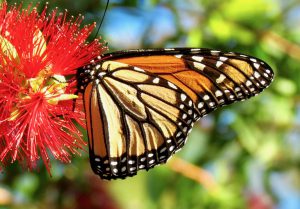
Monarch sampling the Bottle Brush
Next spring this Monarch will mate and the first generation Monarch is on its way. They lay their eggs on so called Milkweed plants solely. From the eggs we get the caterpillars. They will munch on Milkweed plants happily and from the latex derive the Cardenolides (type of steroid that is cardio toxic) that they sequester. The caterpillars will pupate and enter into the chrysalis stage. Of course we humans are destroying Milkweed habitat (along with much else) and if you love these butterflies plant Milkweed plants in your garden and be aware of this connection and educate people around you. If Milkweed disappears so do these beauties
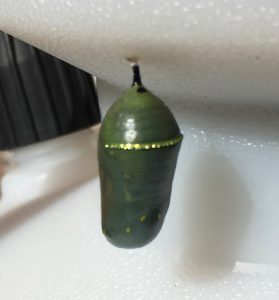
The Monarch Chrysalis is attached to a Round-Up plastic container! They are beautiful but not smart.
Now the great miracle of metamorphosis occurs and the butterfly emerges from the Chrysalis. And – no the shower that fishermen take after a days work is not comparable albeit a small miracle.
This first generation Monarchs will fly north. There will be the second and the third generation as they fly and actually reach Canada. These generations all are completely reliant on Milkweed plants. The Caterpillars will only chomp on those.
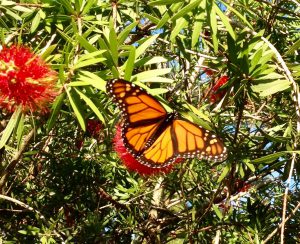
Monarch sampling the Bottlebrush
The fourth generation is responsible for getting back to the winter-grounds and they do not need any Milkweed until after mating next spring. This generation must get nectar for the flight. The Bottlebrush trees are a great attractor and the Hummingbirds also love them but most of the Hummers are gone south by now.
These colors of the Monarchs are there for a reason. This is called true advertising. “I am black and orange and you eat me at your peril” – they are poisonous because of the Cardenolides. In my garden I also find the Gulf Fritillary.
https://en.wikipedia.org/wiki/Gulf_fritillary
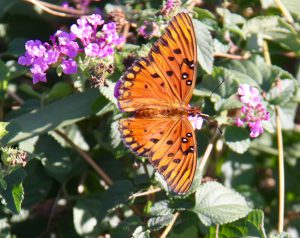
Gulf Fritillary sampling a Lantana
Gulf Fritillary sampling a Lantana
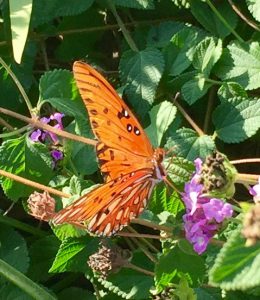
Gulf Fritillary sampling a Lantana
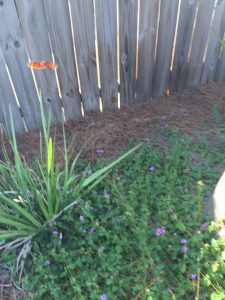
Gulf Fritillary in flight
And we notice right away that they are sporting the same colors. However they are not poisonous. This ploy they use and is called false advertising. They are sheep in wolves garb. I prefer sheep in sheep´s clothes.





Leave a Reply
Want to join the discussion?Feel free to contribute!